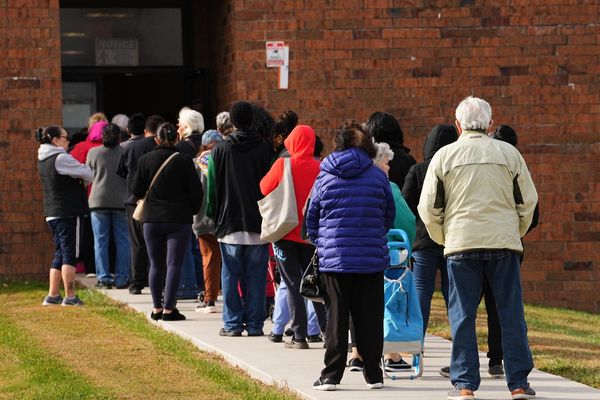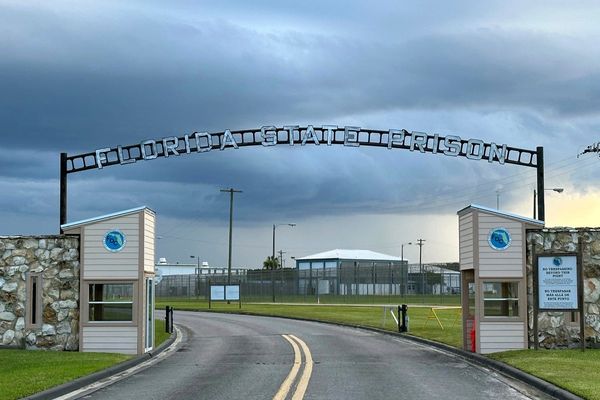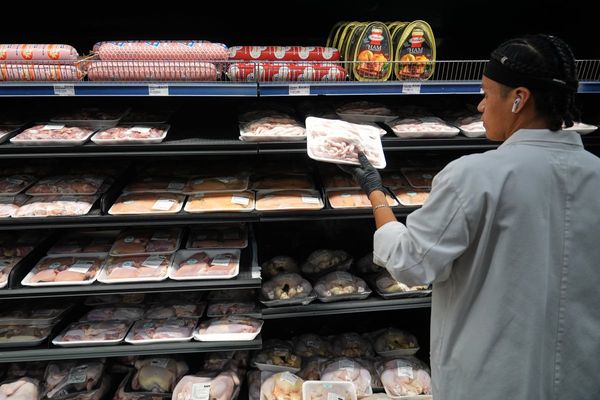
A mere 150 round-leaf pomaderris were thought left in the world in 2021 and now a planned firebreak in Victoria could destroy dozens of the plants.
The critically endangered shrub, which bursts into cascades of creamy flowers, is known to exist in only a handful of locations in central Victoria’s hill country.
Kinglake Friends of the Forest, an environmental community group, is threatening legal action against the state government’s Forest Fire Management Victoria if it goes ahead with the construction of a 23km-long, 20-metre-wide firebreak – an action identified by the government as a key threat to the species.
Sue McKinnon, the group’s president, said the work should have been referred to the federal government for assessment under the Environment Protection and Biodiversity Conservation Act.
“The law is clear,” McKinnon said. “This lovely plant is facing extinction. If it comes to the crunch, we will see them in court.”
The group surveyed inside the area earmarked for the firebreak in July and discovered more than 40 of the plants growing. McKinnon said the group had been told by a regional fire officer that the work was planned for this month.
• Sign up to get climate and environment editor Adam Morton’s Clear Air column as a free newsletter
A 2021 Victorian government assessment of the species estimated only about 150 mature plants remained across 15 populations.
The assessment warned most known populations were in roadside strips, and these were threatened by “road maintenance works and associated fire management and suppression activities including the construction and regular slashing of fire breaks”.
The planned firebreak includes a long stretch along a road.
Irene Proebsting, the conservation coordinator at Latrobe Valley Field Naturalists, said the pomaderris had been “pushed to the edge” of existence.
“After extensive surveys in the area, it’s been found only along roadsides and tracks,” she said. “Now this roadside population is to suffer the very treatment that the government defines as a threat, despite there being no evidence that these cleared strips will do anything to make us safer from fire.”
Dr John Patykowski researched the shrub a decade ago while at Victoria’s Deakin University.
“It’s a beautiful small shrub with these clusters of cream-coloured flowers with glossy little leaves. The number of individuals left is astoundingly low.”
He said the discovery of the plants by the Kinglake group represented the species’ most easterly population and losing them would “increase extinction risk for this species”.
“That sounds to me like a population you would want to protect,” he said. “If there is clearing directly through that patch of plants, you are forcing them into a long-term decline and you’re going to pretty quickly eliminate them altogether from that area.”
He said in normal circumstances, bushfire would help the seeds of the plant stored in the soil to germinate.
But if fires came along too frequently, plants would be killed without a chance to replenish the seed bank.
Other threats to the plant include habitat clearing and grazing by native wallabies, as well as by introduced species, particularly sambar, an introduced deer.
As the Kinglake group raises its concerns, a community group based in Victoria’s central highlands, Warburton Environment, is this week in the federal court arguing the state government’s program of building strategic firebreaks is removing old trees containing hollows that are critical habitat for threatened species.
The Guardian has contacted Victoria’s Department of Energy, Environment and Climate Action – which oversees the forest fire management agency – for comment.
A spokesperson said: “As the matter is before the courts it would be inappropriate to comment.”
• This story was amended on 3 September 2025 to clarify the date of the latest count of existing plants.







